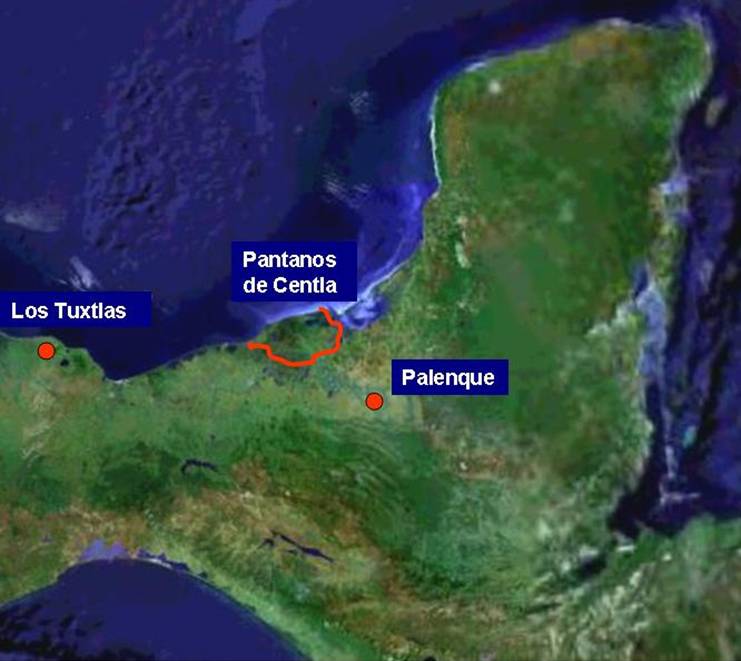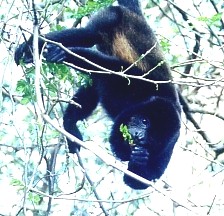Web page constructed by Alejandro Estrada and LeAndra Luecke |
|
LABORATORIO DE PRIMATOLOGIA Estación
de Biología Tropical "Los Tuxtlas",
Instituto de Biología Universidad
Nacional Autónoma de México Washington University |
The tropical forests of México
harbor three species of primates, two howler monkeys (Alouatta palliata mexicana and Alouatta pigra) and one species of
spider monkeys (Ateles geoffroyi). The mantled howler monkey (A.
palliata) has a broad geographic distribution in southern
In
--------------------------------------------------------------------------------
|
|
While much of the tropical forest in the lowlands of Tabasco have been
destroyed as a result of cattle ranching, agricultural activity, and oil
exploration and extraction, a Mexican government system of Natural Protected
Areas (NPAs) ensures the persistence of populations
of both howler monkey species in these lowlands. One of these NPAs is the Pantanos de Centla Biosphere Reserve, ecompassing
ca |
Here we provide a glimpse of first-time explorations of the Pantanos de Centla Biosphere
Reserve aimed at locating coexisting populations of mantled and black howler
monkeys. These explorations were conducted in 2005 and in 2006. Photos below
show our camp site and base of operations: the Mexican government field station
of “Tres Brazos” located within the
wetlands of the reserve and on the southern side of the
|
|
|
Because Pantanos
de Centla is a wetland, much of our field work
surveying monkeys was conducted in small boats and canoes that allowed us to
navigate through the mangrove forests. Once on “terra firme”,
walking through the swamps was obligatory. When black howler or mantled howler
monkey groups were located, our position was triangulated with a GPS and we
proceeded to conduct repeated counts of individuals in the howler monkey groups.
|
|
|
|
In some sectors of the reserve we were
able to traverse the swamps searching for the monkeys by using
“aerial” walkways constructed by local people. This greatly
expedited the process of moving through the mangrove/flooded forest vegetation,
avoiding crocodiles and other hazards.
|
|
|
|
Our surveys revealed
the presence of populations of both black and mantled howlers in the areas
investigated within the Biosphere Reserve Pantanos de
Centla, and we also noticed that both species were
found exclusively on opposite sides of the
|
|
Photo
@ Jenner Rodas |
|
------------------------------------------------------------------------------------
Our research team in these
surveys consisted of LeAndra Luecke
(Washington University), Rodolfo Martinez
(Instituto de Ecología-Xalapa), Genoveva Trejo
(Universidad Autónoma Metropolitana-Xochimilco), Lesly Alejandre and Octavio Cruz (Instituto Politécnico Nacional), and Alejandro Estrada (Field Research Station Los Tuxtlas- Universidad Nacional Autónoma de México).
|
Boat
expeditioners |
LeAndra
Luecke |
Sunset
at Centla Swamps |
For further information
on this research program, please contact LeAndra Luecke <[email protected]> and/or Alejandro Estrada <[email protected]>
Support the conservation of tropical rain forests in Mexico
Copyright @ 2007 Alejandro
Estrada


